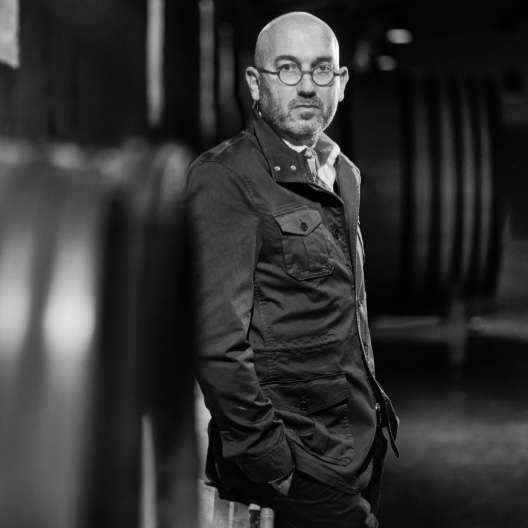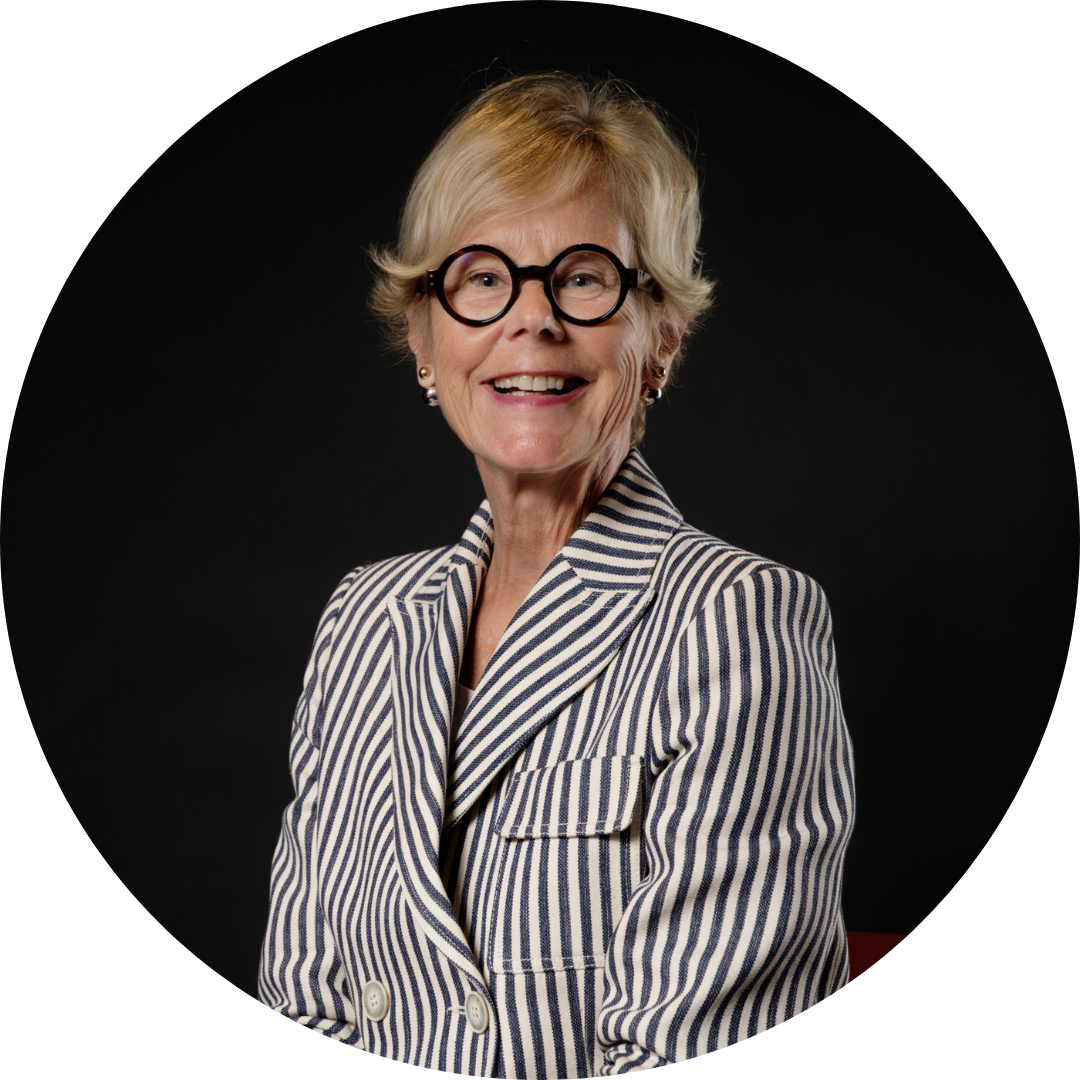Thomas Duroux
CEO
Château Palmer
3ème Grand Cru Classé Margaux
Presentation
Gerda: What are the main challenges you face?
Thomas Duroux: There are many. The first is running a company with 80 employees in many different fields: viticulture, finance, sales, hospitality, communications, etc. If I focus on a few specific points, I would mention production, where, as you know, Palmer has taken a different approach to viticulture. For 15 years, the estate has been biodynamic, and practicing biodynamic viticulture in Bordeaux remains a real challenge. It’s a challenge that has to be renewed every year, but we are making progress every year. Then there is the challenge of a market that has been complicated for three years now. We know the causes, which are mainly financial, with rising interest rates. We have to know how to adapt to this tense market.
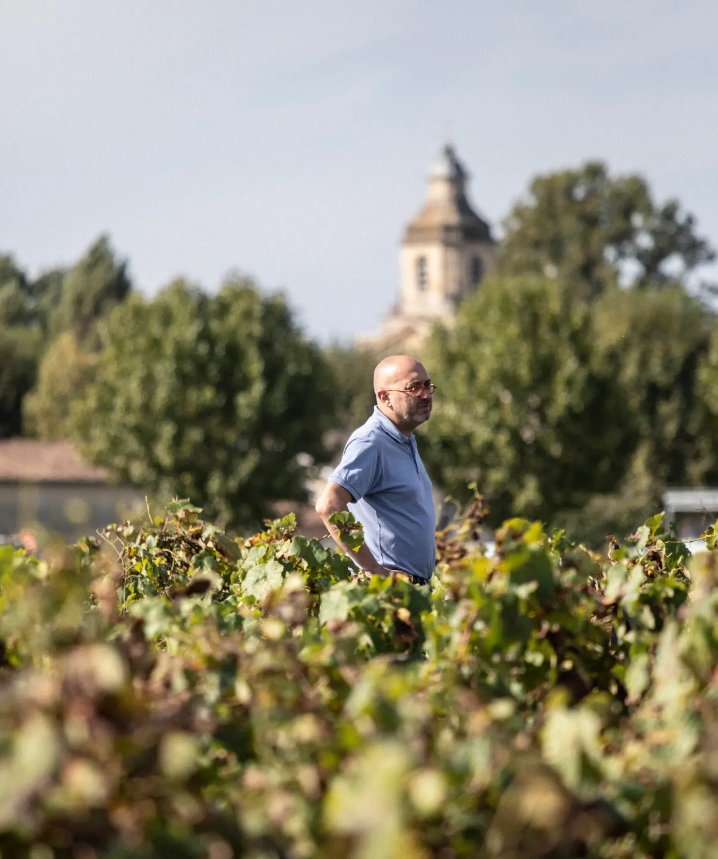
G: You have been Managing Director at Château Palmer for 21 years. Are there any challenges you didn’t anticipate? Mother Nature becoming increasingly unpredictable, for example?
TD : No, we have known for a long time that climate change will make our job more complex. I didn’t anticipate how much the markets could fluctuate. We experienced a golden age 15 years ago, with very strong global demand, but then markets contracted and new ones emerged. And ultimately, when we take a step back and look back, it’s quite impressive to see how much the market can fluctuate. Quite clearly, when I arrived at Palmer, I didn’t have much experience at first, but that was something I couldn’t have imagined.
G: At Palmer, you have been fully converted to biodynamics since the 2014 vintage and Demeter certified since 2018. But is it possible to protect nature and satisfy market pressure, which demands a ‘great’ vintage every year, and in a certain quantity?
TD: I don’t see any contradiction there. In fact, it’s easier for the market to sell great vintages than average ones. That’s obvious. However, our primary duty is to ensure the future of an estate like Palmer, and that obviously means respecting the soil, respecting biodiversity and respecting the vineyard.
G: And by respecting a certain yield, for the economic viability of the estate, perhaps?
TD: No. In the specifications I was given on my first day at Palmer, the notion of yield never existed. What I have always been asked to do at Palmer is to find ways to make the best wine possible. And so yields at Palmer are low. A normal harvest at the estate is between 30 and 35 hectolitres per hectare. We are convinced that this is the price to pay to get the most out of the terroir. It may be different at other estates, but at Palmer, that’s how it is. Quite clearly, when I arrived at Palmer, I didn’t have much experience, but this was something I couldn’t have imagined.
The Palmer brand and Alter Ego by Palmer Today & Tomorrow

Chateau Palmer 2022 & Alter Ego 2022
G: How do you want your brands to be positioned?
TD: I don’t think it’s a strategic move to say, ‘This is where we’re going to position ourselves.’ I think positioning is the result of the market and wine lovers understanding what we do. It seems to me that the wines we produce on the estate, our two brands, have a strong image of being a bit different. They are not necessarily easy to define in a few words. But they convey an image of uniqueness, and that suits us. However, it is not an explicit desire on our part to seek out this positioning. It is the result of all the actions we take on a daily basis.
G: Even though Palmer and Alter Ego are difficult to define, how do your wines stand out, and are they unique?
TD: I think Palmer and Alter Ego are the strongest symbols of a complex ecosystem that we have been building for years. However, these are two wines with two different personalities, because they come from different terroirs. Alter Ego comes from light gravel plots, which are the most classic in the Margaux appellation. Alter Ego is the archetype of what a great Margaux wine should be: fine and feminine. Palmer comes from more specific terroirs, which are rarer in the appellation. These are gravel soils with a higher clay content. Palmer has a unique texture, fuller and more enveloping than Alter Ego. If I were to use two analogies, in terms of fabric: Alter Ego is more silky and very fine. Palmer is more velvety, with a fuller body and texture.
The Business
G: What are your main markets?
TD: Palmer’s distribution, which is carried out by our negociants—including Roland Coiffe—is very balanced, even if there are some variations from year to year. Overall, Europe, including France, accounts for between 40 and 45% of our distribution. Asia accounts for between 30% and 35%, and North America accounts for the rest, with of course a few micro-markets such as Africa and South America. There is a good balance in this distribution. We are very grateful to the trade for managing this fragmentation, and we hope that this will continue.
G: What are your priorities in terms of commercial development?
TD: It is to continue to be balanced across all the markets that matter. To be very attentive to emerging markets, which may become important in the future — and therefore to understand them, visit them, and know how to adapt in terms of commercial efforts.
G: What are the emerging markets for you?
TD: Today, it is quite difficult to distinguish true emerging markets. In the current context, not much is happening. But we can legitimately think that, in the future, a continent like Africa will develop. We all hope that a country-continent like India will open up. It is a country with a great sense of refinement. Although very diverse, it could become a promising market.
G: Yes, India has been a recurring topic for a long time… I also believe that wealthy Indians already have their own cellars in London?
TD: Yes, of course. But I don’t think we should only target the very wealthy. Even if the greatest Bordeaux wines come at a certain price, everything is relative. I remember when I was a student and didn’t have much money, I would chip in with a few friends to taste extraordinary wines, because it was one of my priorities.
G: Today, Palmer and Alter Ego de Palmer are rated by many wine critics. What do you think of the rating system today?
TD: It’s always important to have opinion leaders.
G: But is there still a real leader today?
TD: No, there isn’t just one leader, but several. Many journalists taste, comment on and rate wines. I don’t think that today, as in the past, any one person calls the shots. What matters is that wine lovers can find something to relate to in each person’s comments and ratings. Those of us who have been in the market for a long time can see that today’s world is very different from the days when there were one or two leaders.
G: You are in frequent contact with our importers, distributors, sommeliers and end consumers. Are ratings still important to them?
TD: Yes, I think ratings remain an easy reference point. In the United States, when you walk into a wine shop, there are bottles everywhere, and each one has a rating. Sometimes it’s not even clear who gave the rating, but it’s there. Negociants feel that these ratings facilitate sales. In reality, few consumers buy expensive bottles without knowing what they are getting. Some people attach importance to the rating, but others are more curious and interested in the wine itself, as well as the history of the estate that produces it. So we need to put things into perspective, but ratings remain an important and widely used tool.
G: The ‘Village of Palmer’ really embodies this idea of ‘putting a place in a glass’. It’s very well presented on your website, but in your opinion, why does this approach resonate so much today?
TD: I think we’re in an era where consumers are interested in products and how they’re made. The product itself is no longer enough to attract consumers. The story behind and around the product is fundamental.
The idea of putting a place in the glass means that we want to make wines that express their terroir, wines with a unique expression and a strong character. And to make this type of wine, you have to understand the territory, bring it into harmony, and ensure that everything works together in a simple and complementary way. That’s why I think it’s very important to work on this ecosystem, as we do. You can feel it in our wines: the link between the product and the terroir has never been stronger.
We have created a workers’ canteen on the estate, which we use to feed all the people who work here, and which is now also open to the public, but on a modest scale. There are 20 places for the public, with a workers’ menu. And there is the Château table, which is only for people who come to visit us. We can accommodate between 2 and 8 people there, privately. They come to the Château table for a very high-level gastronomic experience, based on the cuisine of Jean-Louis Le Bras. This is one of the tools we have to explain this ecosystem and to convey the complexity behind the production of a wine like Alter Ego and Château Palmer.
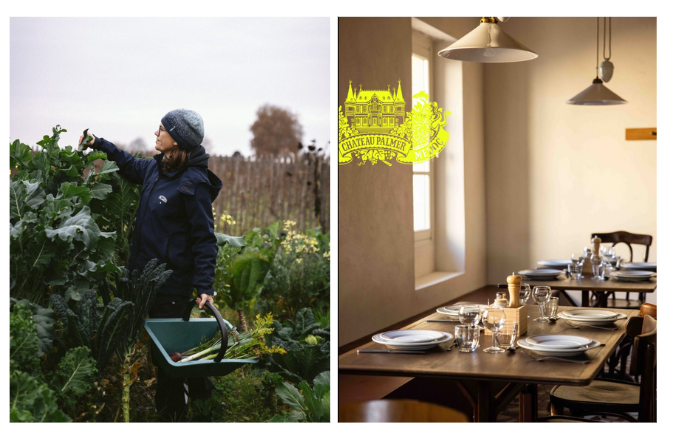
Distribution Today & Tomorrow
G: How do you perceive the current crisis in Bordeaux?
TD: There are two crises:
– There is a structural crisis, which mainly concerns everyday consumption. We know that wine consumption has fallen in Western countries in recent decades. This has led to overproduction in the current market. We can therefore imagine that French vineyards, as well as Italian and Spanish vineyards, are likely to decline.
– Then there is another crisis, this time cyclical, affecting fine wines, which have major economic implications. It began with the rise in interest rates: the financial costs of carrying stock increased, prompting the industry to sell off large quantities of stock. This led to a fall in prices, exacerbated by the oversupply of wine on the market at the time.
The Bordeaux market, although extraordinary, reacts with great amplitude: it soars upwards, but falls just as sharply downwards. Today, we are clearly in a phase of decline, which we are experiencing with great intensity. There is one wonderful thing about Bordeaux: we have a very long history. And when we look at that history, it is easy to find moments that resemble what we are experiencing today. So it will be interesting to see what happens.
G: Yes, this is not the first crisis we have experienced.
TD: Yes, and that doesn’t mean that things will happen in exactly the same way. But thanks to history, we have something to help us project ourselves more easily.
G: As for the structural crisis, how can we attract the new generation to our fine wines?
TD: In fact, we need to attract the new generation to our wines in general. Of course, for entry-level and mid-range wines, we need to adapt the taste to this new generation. A significant effort needs to be made in terms of communication and marketing.
In Bordeaux, we probably suffer from a lack of strong brands. There are some, but too few compared to other regions. We know that the younger generation is sensitive to these issues. One brand that has been extraordinary in the past is an Australian brand: Yellow Tail. Its success has been extraordinary. We in Bordeaux have never had such a strong brand. I think we need one in order to promote our production and attract new consumers. Bordeaux missed the rosé boat, even though rosé is struggling today, but it was an extraordinary boom. Technically, we have everything we need to make wonderful rosés in Bordeaux that suit today’s consumer tastes. There was a time when Bordeaux produced more white wines than reds. We have some very fine grape varieties that enable us to make very pleasant white wines. I have memories, when I was a young man, of glasses of Entre-Deux-Mers white wine with white prawns from the estuary… They are superb combinations. There is no miracle solution, but there is a need to make multiple efforts, together, to imagine the future.
G: How do you plan to attract the new generation to Alter Ego and Palmer?
TD: Palmer, along with other wines, is at the top of the pyramid of great Bordeaux wines. It cannot exist without the base of this pyramid. If the base disappears, we will suffer greatly. So we must contribute to the recognition of the region. This is very important. Then, to capture the attention of young consumers, we need to create a dream. We know very well that a young consumer aged 20 to 25 is not necessarily a Palmer customer, but they may be one day, if wine becomes one of their interests and if they are curious enough to go and taste iconic wines, such as those we produce. But the wine itself is no longer enough. We need to successfully convey all of our values and everything that goes into achieving this strong expression of the terroir.
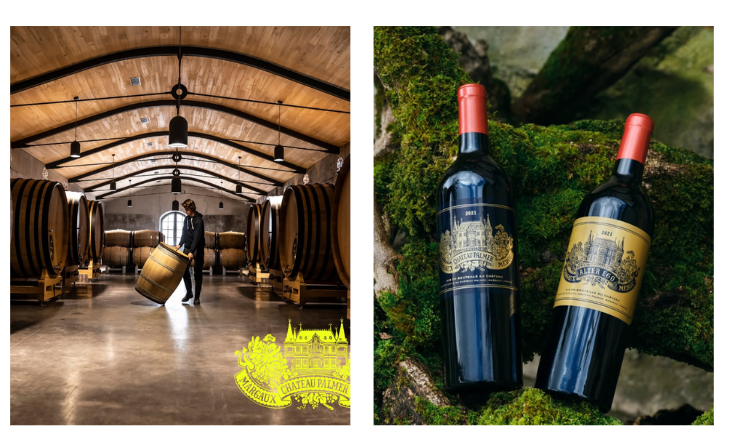
G: Do you think there’s still a future for selling wines as En Primeur?
TD: It’s a legitimate question. And… I don’t have the answer. But we’ve been preparing for that possibility for quite some time. If the En Primeur system were to disappear — which I sincerely hope it doesn’t — we’ll know how to adapt. But when the logic of “best price” is called into question and it feels like every wine is available everywhere, all the time, the system’s appeal begins to erode. Digital tools like Wine Searcher have profoundly changed the market: they create an impression of constant availability, sometimes at incoherent prices, which clouds the market’s readability.
G: Yes, even if it’s just a single bottle on offer.
TD: Yes, it can create chaos in a market that has become extremely transparent. The price of Palmer 2017 isn’t the price of three bottles listed on a random network. That creates confusion. The En Primeur system is under pressure from issues like this. No one is forced to buy our wines en primeur. Our 2024 production is very small — we’ll sell what the market wants to buy, and we’ll keep the rest. I think there will always be people interested in buying En Primeur, but probably fewer than before. Maybe instead of relying exclusively on En Primeur, we need to operate differently — hold on to our bottles for as long as there are buyers. Over the past 20 years, I’ve thought a lot about alternative solutions for the Place de Bordeaux, and I’ve always come back to the same conclusion: it’s like democracy — it’s not perfect, but it’s the best system we have, and it’s worth fighting for.
G: Maybe the new generation just isn’t interested in a system where they have to wait two years for delivery. It’s a generation that skips ahead — like in the great Queen song: “I want it all, I want it now.”
TD: Yes, of course. The reality is that En Primeur purchases today are still mainly made by people who have cellars — collectors who want to keep building their collection. The consumer who doesn’t have a cellar isn’t going to buy En Primeur, you’re right. That’s why we have to be able to cater to both types of clients. That’s why every year, in September, we release a vintage of Palmer that’s ten years old to meet that demand. This year, we’ll offer Palmer 2015. These bottles have been stored at the estate since bottling. We want to respond to the demand from wine lovers who want to enjoy their wines right away.
La Place de Bordeaux
G: Could you expand a bit on the relationship between you — the estates — and us, the négociants of the Place de Bordeaux?
TD: I’ve been here a long time, and of course, in any business relationship, the human factor matters. Over twenty years, I’ve built strong personal relationships with many of our négociants. But overall, the relationship between estates and the trade has become more fluid. There’s less role-playing than what I saw in the early days. Things are simpler now.
G: Would you say we’re more in a true partnership now?
TD: We listen more. There’s more transparency. I think it’s easier to have real conversations than it used to be.
G: But it’s a transparency that you imposed on us.
TD: Yes, of course — and it was difficult at first, because it was misunderstood.
G: Yes, because as négociants, we’re not agents. We buy your wines and contribute to their international presence through our distribution networks — that’s where our real added value lies.
TD: Absolutely. But at the same time, it’s essential for an estate to understand how its wines are being distributed. It took time to establish that, but I don’t think we’ll ever go back to the way things were. Relationships are smoother now, négociants are more transparent. I feel there’s a good level of trust. And I remain convinced that we have a truly extraordinary system for distributing our wines. Of course, there are challenging times — like the one we’re going through now — but there will also be easier ones. It’s up to us to know how to react, and sometimes, to weather the storm.
G: Bernard Burtschy recently told me that “the Place de Bordeaux must reinvent itself, because, like in the luxury industry, major brands are trying to regain control of their distribution.” Do you agree with that assessment?
TD: I do — but I’d say the Place de Bordeaux has always been reinventing itself. It’s actually a shapeshifting tool with a great capacity to adapt. From the outside, it might seem very traditional and conservative, but that’s not the reality. The reason the Place has kept evolving is because it was built by people from many different backgrounds — locals from Bordeaux, but also many foreigners who came here. That cultural diversity makes the Place de Bordeaux very adaptable. I’m not so sure that fine wine estates really want to take back control of their distribution. There was a strong trend in that direction about ten years ago, when everything was going well — some estates were even micromanaging the trade, saying things like, “You sell three cases to him, two cases to that guy…” I think that phase is over. Estates now understand better that the real strength of the Place lies in its adaptability, its agility in distribution, and its openness to new markets. Bordeaux négociants are on the front lines when it comes to market trends. That doesn’t mean producers shouldn’t know what’s happening — but it does mean we should let the specialists do their job. And when it comes to distribution, the specialists are the négociants, not the estates.

G: We need to find a balance between you and us.
TD: Yes, absolutely. Freedom, yes — but the trade must not go against the interests of the estate. If you want total control over your distribution, then you don’t go through the Place de Bordeaux. In that case, you build a network of exclusive distributors. That has its advantages, but also some drawbacks.
G: We’re seeing growing market interest in the arrival of non-Bordeaux wines on the Place in recent years. What’s your take on this trend?
TD: It’s something I strongly supported at the time, because, as you know, before Palmer I was in Italy, and I very modestly helped the Masseto team as they began distributing their wine through the Place. The Place de Bordeaux is meant to become the marketplace for the great wines of the world. But as with any new development, there have been some excesses. The Place couldn’t resist moving too fast and too far. It has allowed in wines that, in my opinion, don’t yet have the legitimacy to be distributed through Bordeaux. Things are a bit shaky at the moment, but with time, it will sort itself out. The Place de Bordeaux is made to distribute wines that already have a strong reputation. The trade can’t — and shouldn’t — do otherwise. It’s like the stock market: when you start a business, you don’t list it right away. First, you build the company, develop a business model, and if it succeeds, then you go public. It’s the same with wine: you create a wine, you develop it, and when it becomes strong and successful, that’s when you can come to the Place — but not before.
G: How do you see the role of the courtier today?
TD: It’s a role that’s very hard to understand unless you’re part of the system. But it’s essential for the Place de Bordeaux to function. The Place can’t work without these middlemen, who are the guardians of the rules that need to be respected. And courtiers— for both us, the estates, and you, the négociants — also help smooth our relationships even more. As I said earlier, things are simpler now. But courtiers have that global vision that helps all of us step back and see the bigger picture. I have a lot of respect for this profession. That wasn’t at all the case when I arrived 20 years ago.
G: Many distribution networks have become shorter with the rise of the internet. We are one of the rare systems that hasn’t changed: there are still three players on the Place — the estate, the courtier and the négociant.
TD: Yes — and that’s not a contradiction. In fact, the Place de Bordeaux is both a distribution and regulation tool. It constantly helps balance supply and demand. In shorter circuits, it’s much harder to manage that equilibrium. Let’s take the complete opposite of the Place de Bordeaux — the B2C model. If you’re an estate and you only sell directly to consumers via a mailing list, you’re entirely dependent on them. If half of them suddenly stop buying, you have very little flexibility. Whereas with the Place de Bordeaux, we can adapt at any time. It’s extremely agile — and that’s its strength.
Final Words
G: If you had to choose just one “heartfelt” bottle, which one would it be?
TD: That’s always an extremely difficult question because I’m passionate about wine and my cellar is full of beautiful bottles. So it’s impossible for me to pick just one “heartfelt bottle.” However, I can tell you about the last one that deeply moved me. It’s a red wine from Bandol, from an old and historic estate, perhaps less trendy nowadays: Château Pradeaux. I was lucky enough to taste the iconic 2001 vintage, and that bottle gave me a great emotional experience.
G: What kind of emotion did it evoke?
TD: It’s the feeling of drinking something unique, with such a personality that no other wine can resemble it. It’s the very essence of terroir-driven wine. That bottle was very powerful in that regard.
Gerda BEZIADE has an incredible passion for wine, and possesses a perfect knowledge of Bordeaux acquired within prestigious wine merchants for 25 years. Gerda joins Roland Coiffe & Associés in order to bring you, through “Inside La PLACE” more information about the estate we sell.

